This is part 3 of our journey through Newfoundland. Read part 1 and part 2.
After our tour of the Avalon Peninsula we drove up to Twillingate. Twillingate and neighboring Fogo Island are the undisputed iceberg capitals of Newfoundland. Here, a string of islands sticks way out into the Labrador current, which carries icebergs from Greenland southwards. These islands act as a strainer, so icebergs tend to run aground in this area. I was really keen to see some icebergs.
The drive from Ferryland to Twillingate was a long one. It was a beautiful day for a drive – clear and warm. However, things were about to change. A nor’easter was predicted to arrive overnight, bringing in rain, fog, high winds, and cold temperatures. We didn’t get to Twillingate until after 6 pm, and knowing what was in store for us with regards to the forecast, we decided to skip dinner and to start looking for icebergs while we still had the chance. We ran around like chickens with their heads cut off until it started to get dark.
Welcome to historic Twillingate. Are those icebergs in the background? Yes they are!
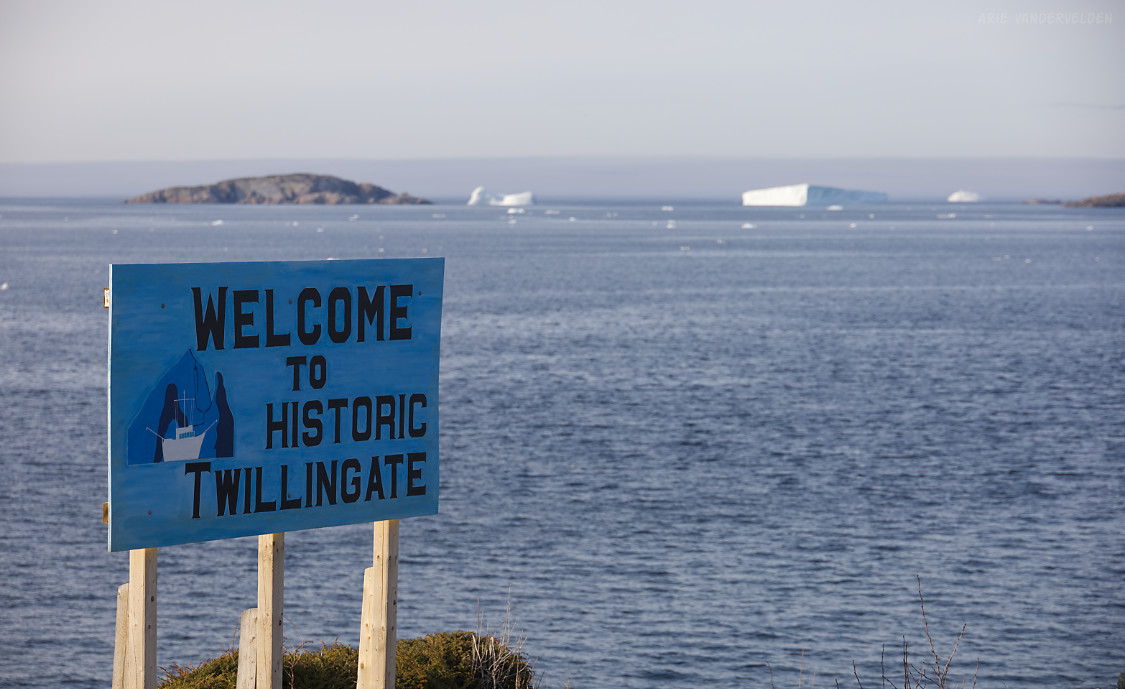
Yes, icebergs. Pretty big ones too. We stepped out of the car, wide-eyed and slack-jawed, and said: wow!!

This one at Little Harbour was a bit closer to shore.
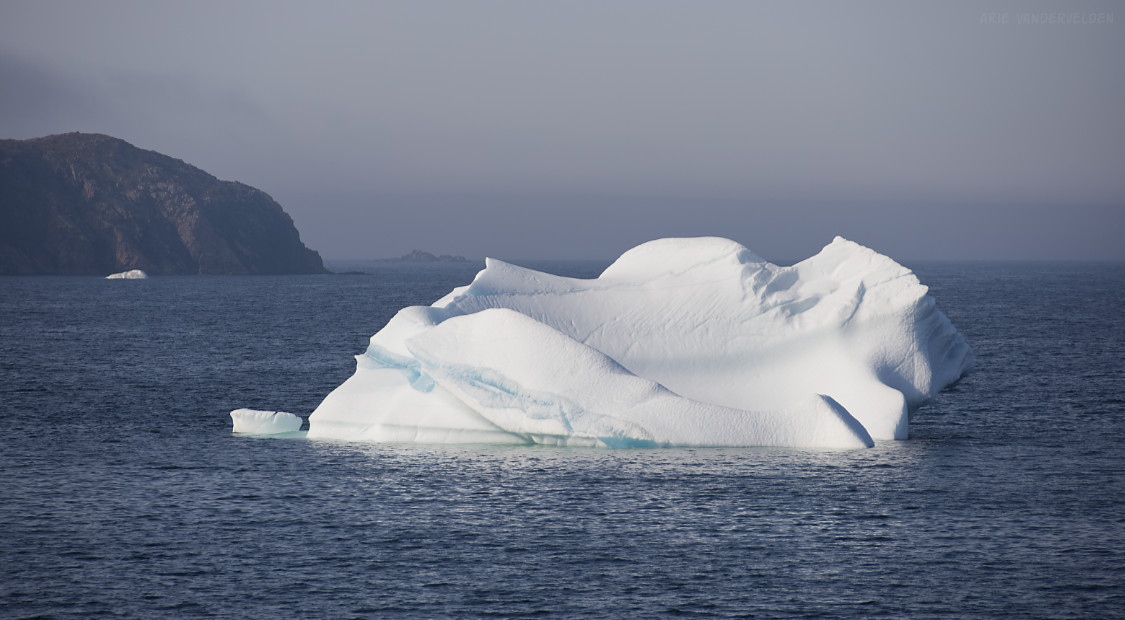
Evening views of Twillingate.
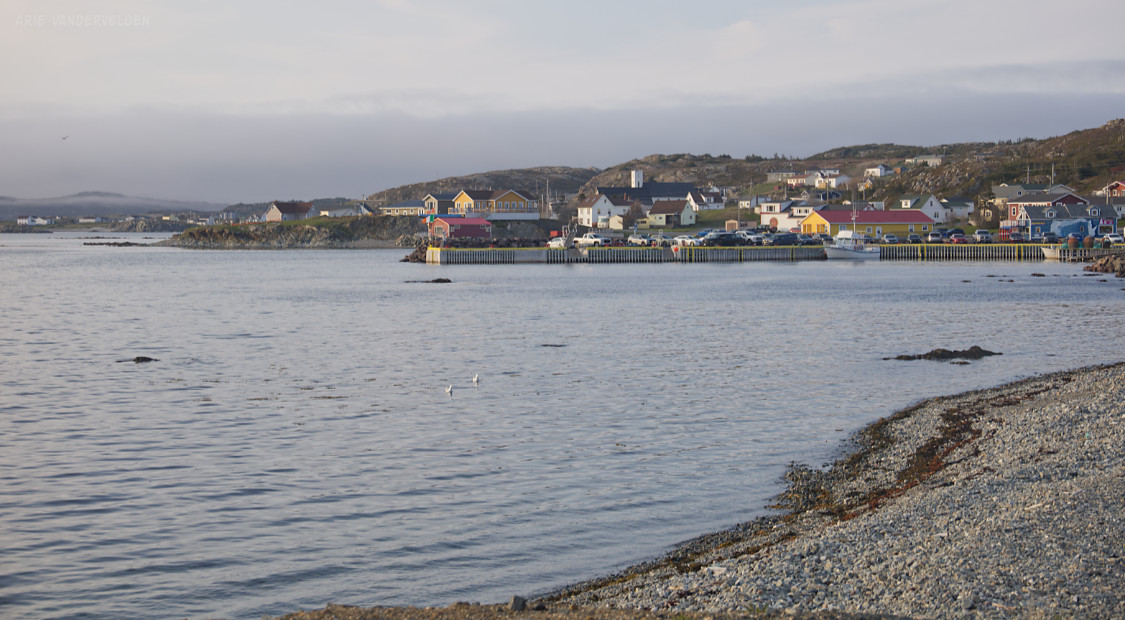

Tilted iceberg.
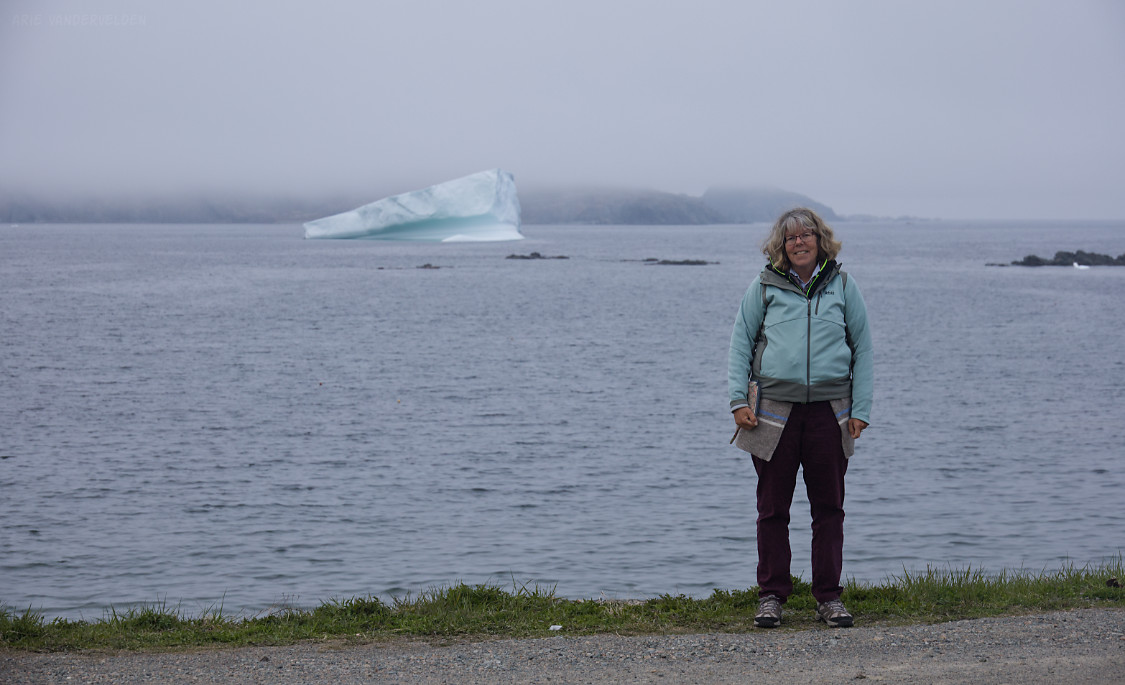
The evening light got dimmer, and the fog rolled in. We spotted one more iceberg across the bay.

Note the extension towards the left on this iceberg, right at the sea surface. It’s a well-known fact that icebergs are much larger beneath the surface than above. This is because their buoyancy is not that great. Hence the expression “tip of the iceberg”.

A tourist boat cruised past.

As the tourist boat came around a corner, we saw a huge iceberg lurking in the far distance.
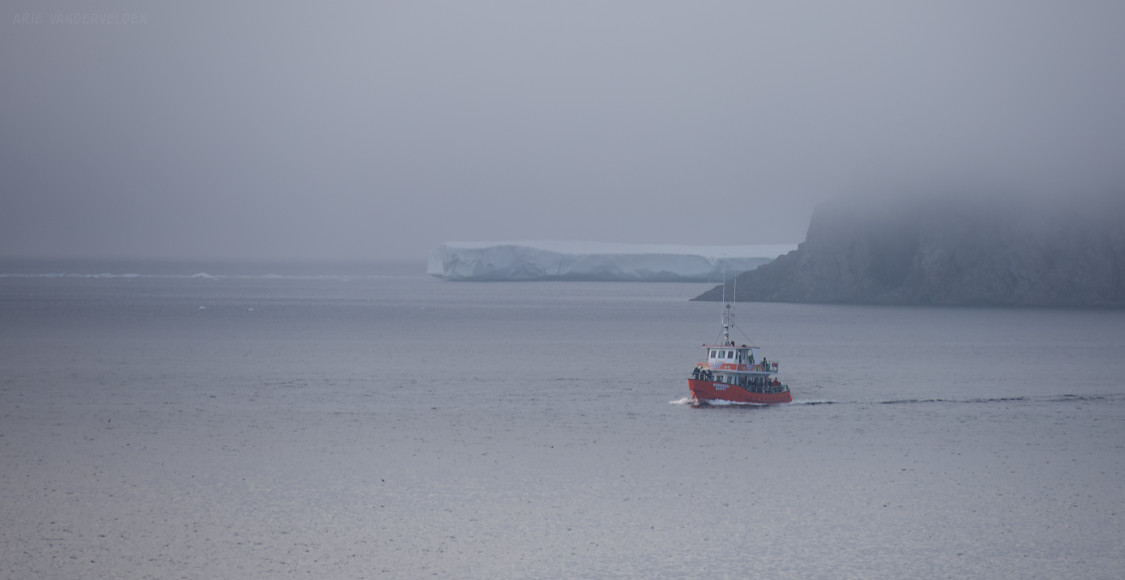
We drove to a different position to get a batter view of this giant. It was hard to estimate how big it was, given that it was far away and in the process of being swallowed up by the fog. But it was definitely several acres in size.
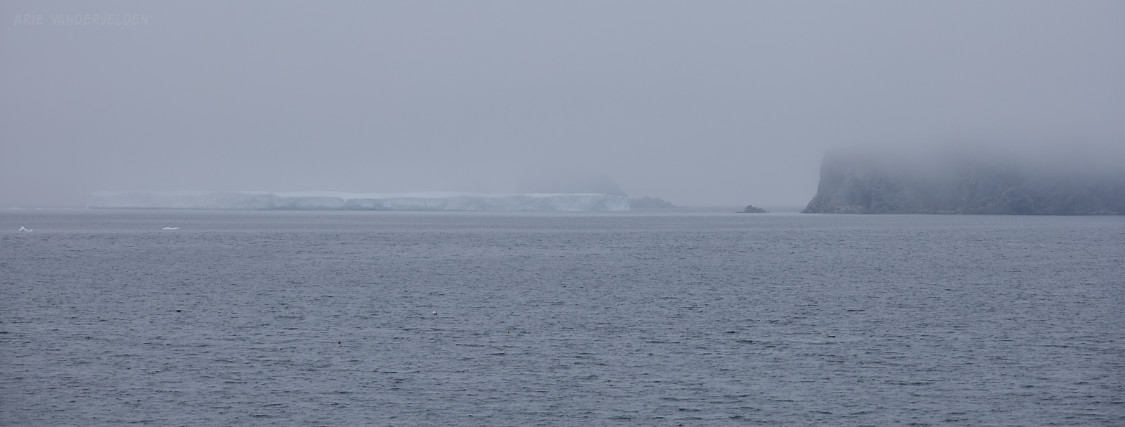
The next day turned out exactly as promised: rainy, foggy, windy, and cold. The temperature never exceeded two degrees Celsius that day, and for the next week we never got above plus six. Yes, b’y, Newfoundland in June.
We could see the giant iceberg from the front porch of our cabin.
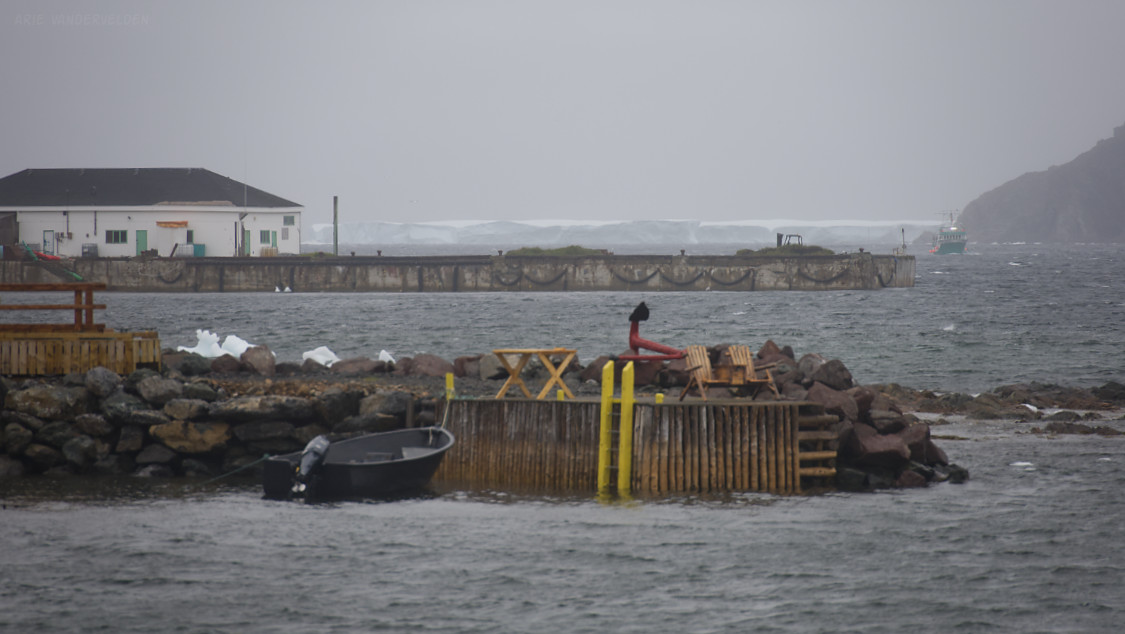
Only one boat had gone out in the atrocious weather.

We drove out to the lighthouse, but there were no views due to fog. The foghorn was very loud.
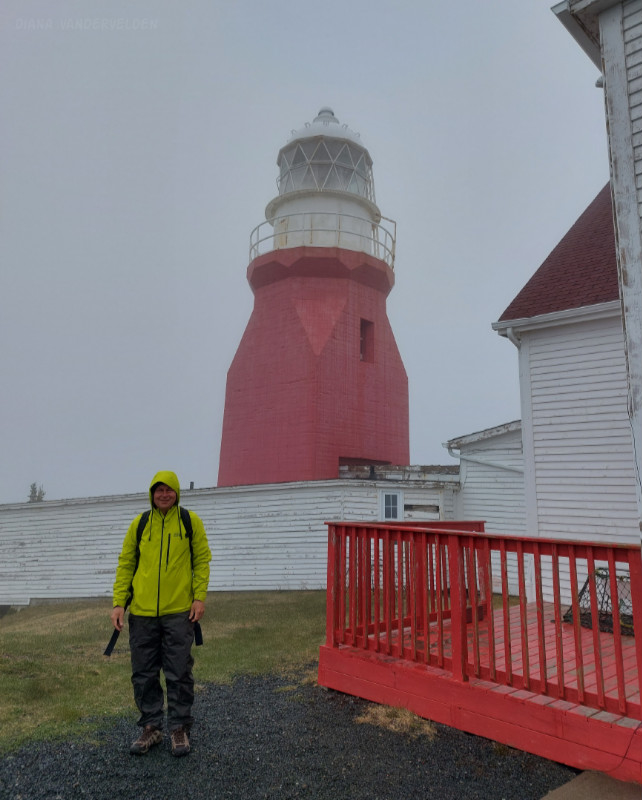
Twillingate.

Fishing lures.
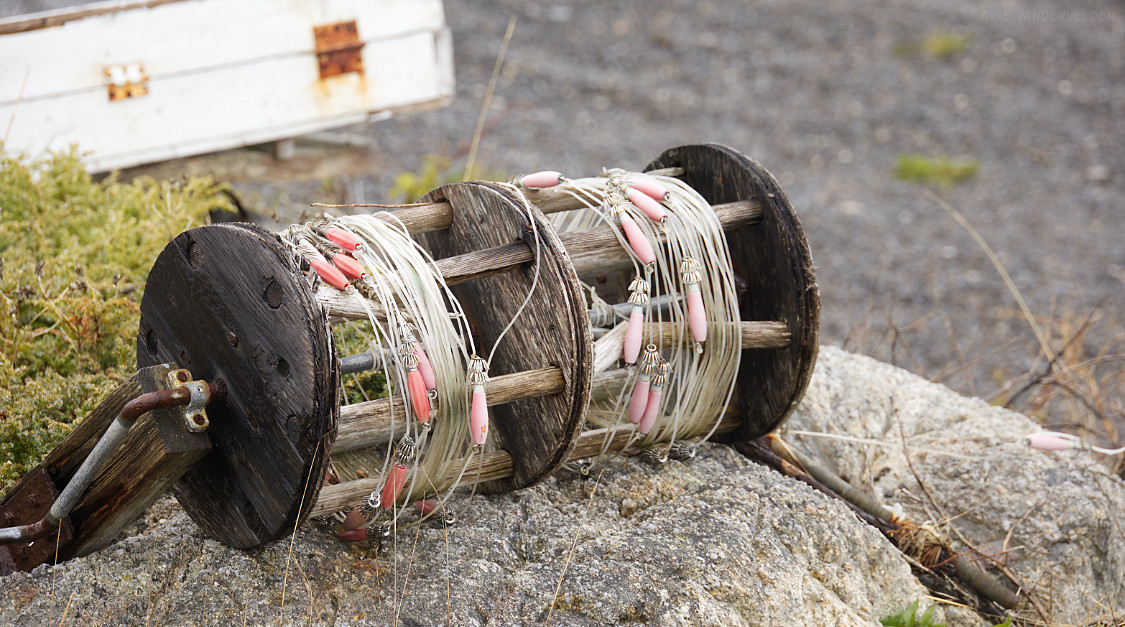
We had brought raingear and warm clothes with us. So, undeterred, we set off on a hiking trail in search of icebergs.
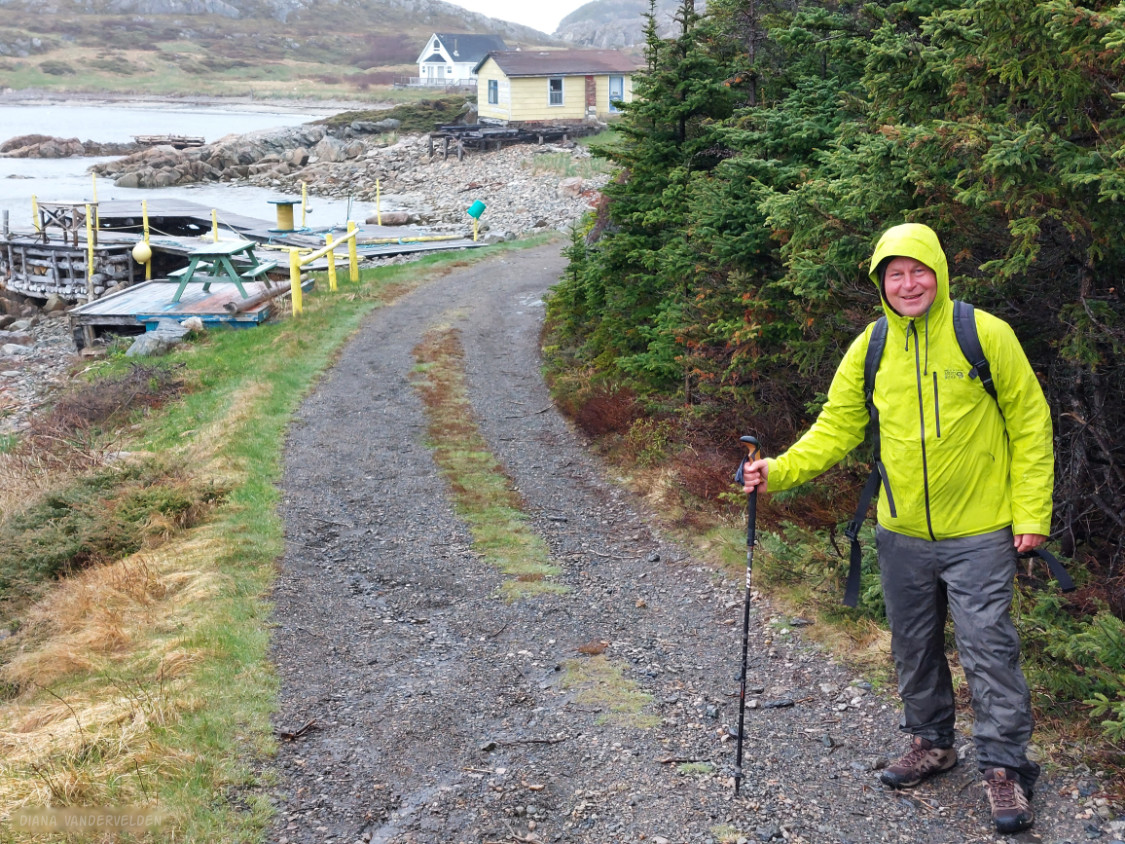
Trees offered some shelter from the wind.
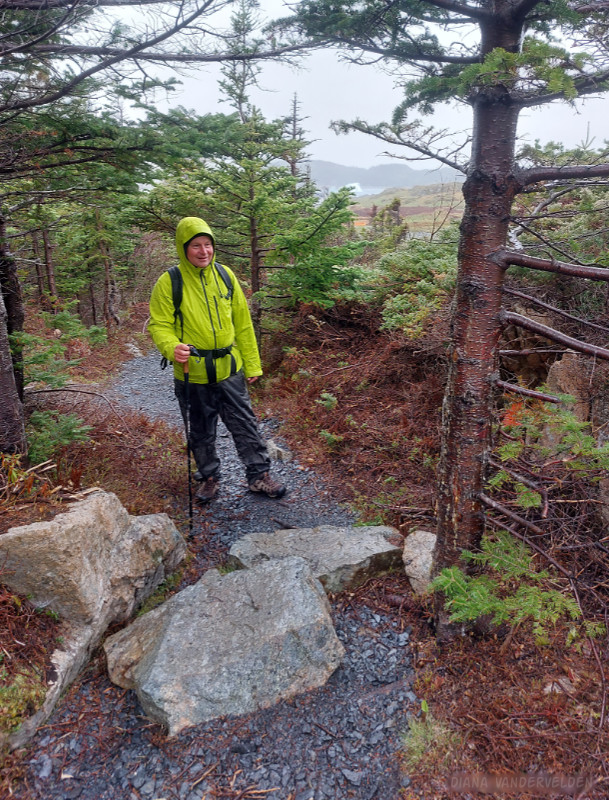
Well, “undeterred” may be a bit of an exaggeration. We didn’t go very far. But far enough to get a view of these icebergs in the next bay.

Getting an acceptable photo in these conditions was tricky business. The front element of my lens kept getting pelted by rain. It took a few tries of wiping off the moisture, recomposing while shielding the lens as best as I could, and then shooting quickly.
The next photo looks back toward Little Harbour. Note the concrete root cellars in the foreground. I believe they date from the 1930s.
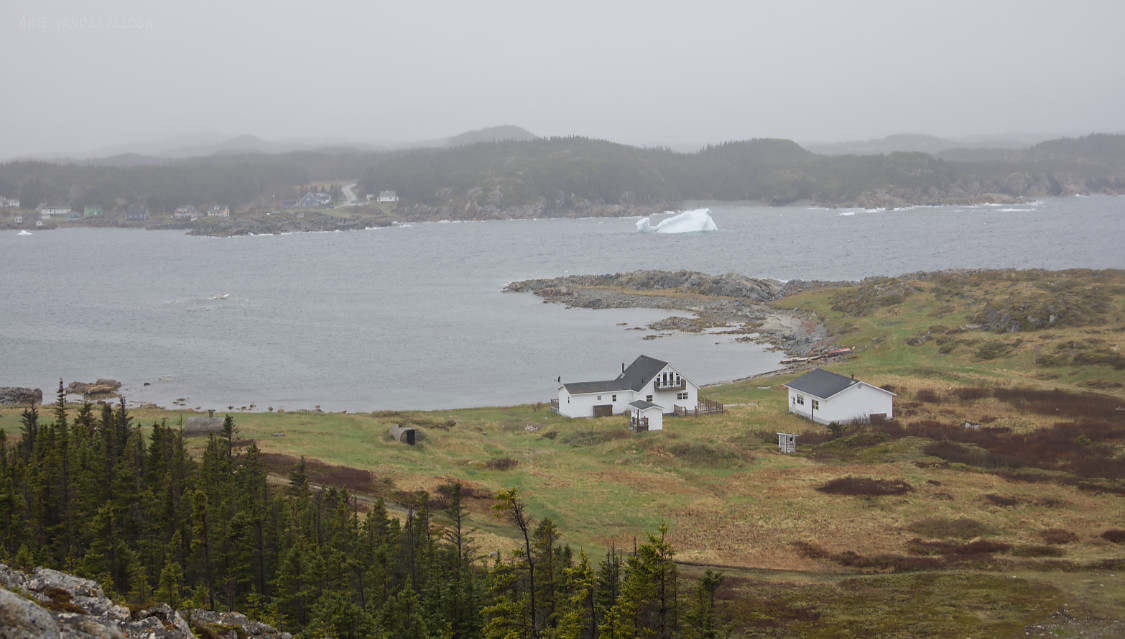
Continue to part four of our Newfoundland trip.
